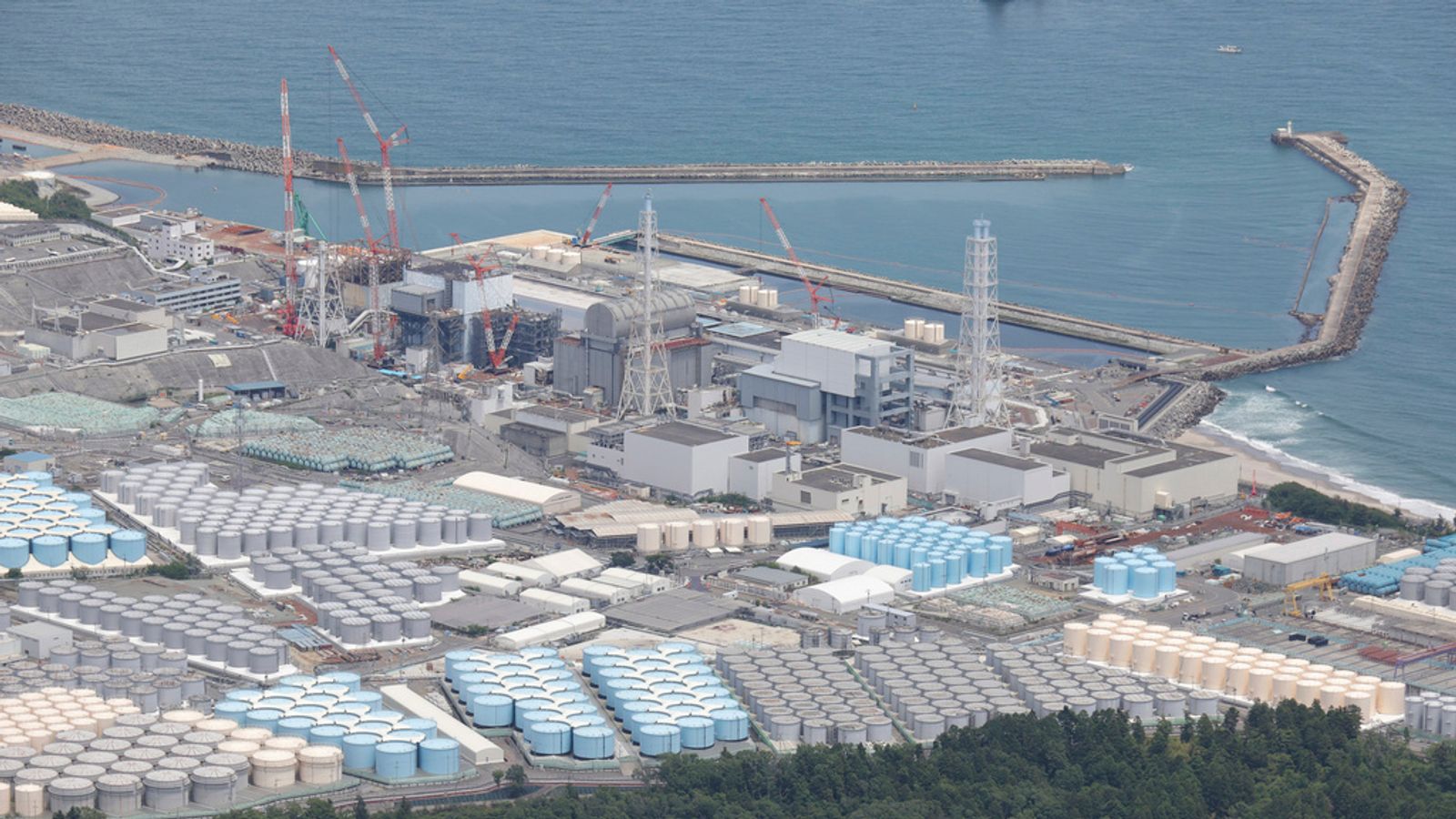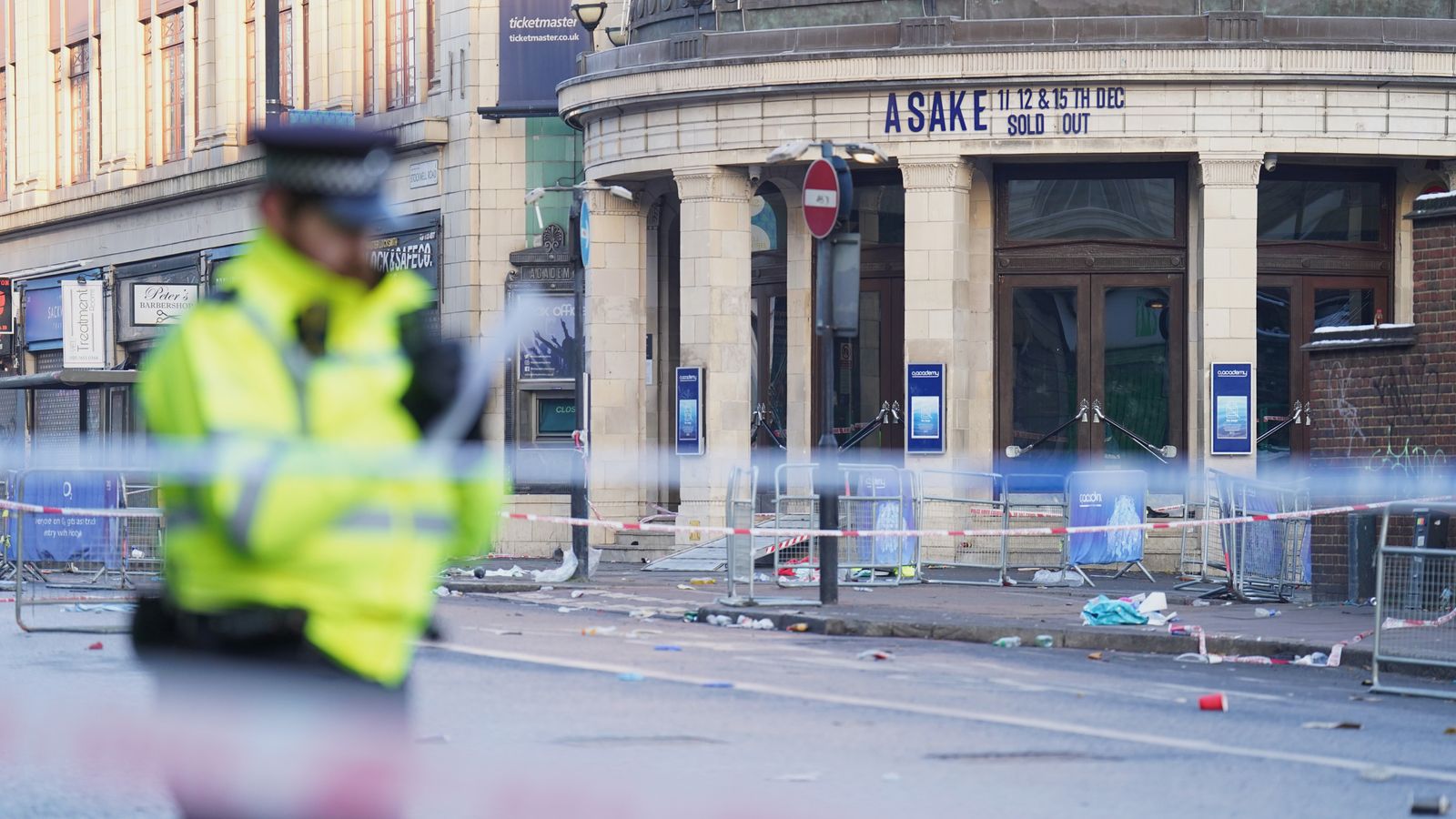Final inspections are taking place at the Fukushima nuclear plant in Japan ahead of the release of treated radioactive water into the Pacific Ocean.
The last piece of equipment needed for the release – the outlet of the undersea tunnel dug to pour out the more than 1 million tonnes of water 1km offshore – has been installed by the plant’s operator Tokyo Electric Power Company Holdings (TEPCO), meaning the inspections can begin.
Nuclear Regulation Authority inspectors will look at the equipment installed for the discharge of the water, and the plant’s safety systems, until Friday.
It will then be another week until the permit to release the water is issued, with the event taking place soon after – though there’s no exact date.
However, the plan has faced criticism from local fishing groups who say they are concerned about safety and have not given their blessing – despite TEPCO and the government promising to get their consent in 2015.
South Korea, China and some Pacific island nations have also voiced concerns.
The wastewater, according to officials, must be removed from its 1,000 tanks to prevent accidental leaks and so the plant can be decommissioned.
Japan lifts evacuation order in town near Fukushima 12 years after nuclear disaster
Tsunami warning issued after powerful magnitude 7.3 earthquake hits Japan
Six thyroid cancer patients to sue over Fukushima radiation
They add the treated, but still slightly radioactive, water will be diluted to levels safer than international standards and will be released gradually over decades, making it harmless to people and nature.
However, some scientists say the impacts of long-term and low-dose exposure to the radioactive water are unknown, while others say the plan is safe but should allow other experts to join in the sampling and monitoring.
The IAEA has given its support for the launch and has dispatched several missions to Japan in the last 18 months, and while it will give its final report soon, it cannot stop the release.
More on Fukushima:
Japan lifts evacuation order in town near Fukushima 12 years after nuclear disaster
Fukushima ‘failings’ add fuel to fire of world’s anti-nuclear movement
The body’s chief, Rafael Mariano Grossi is expected to visit the site next month and speak with the country’s prime minister Fumio Kishida.
The Fukushima plant was hit on 11 March 2011 by a huge earthquake which destroyed its cooling systems and caused three reactors to melt, contaminating the water and triggering continuous leaks.
By early 2024, the storage tanks which hold the leaked, treated water, will reach their capacity.






